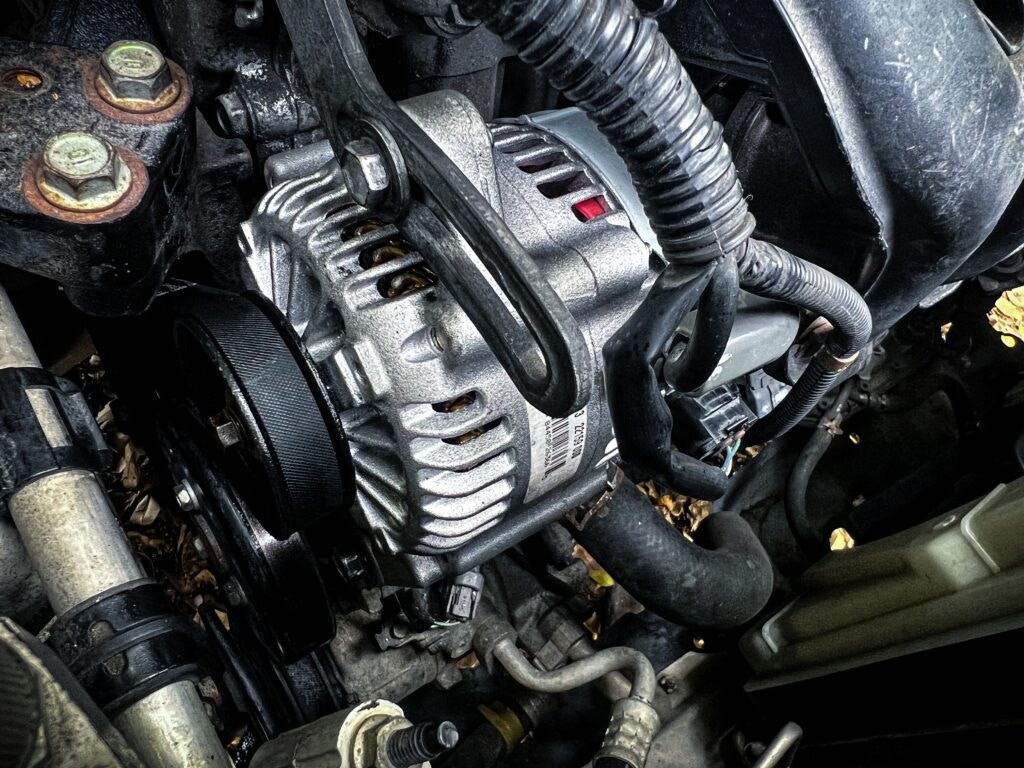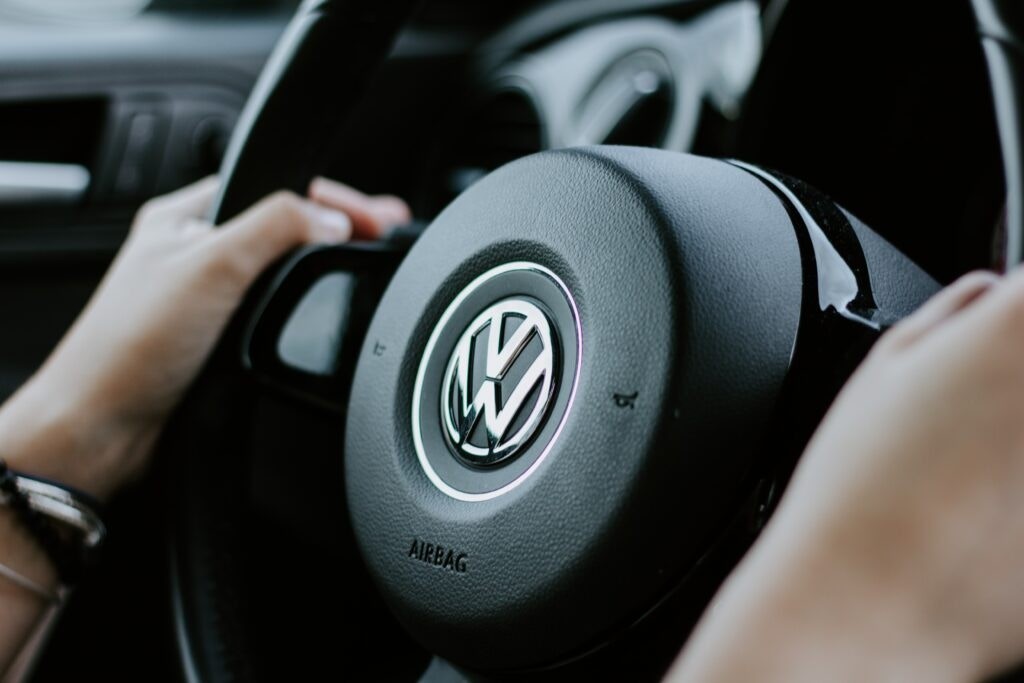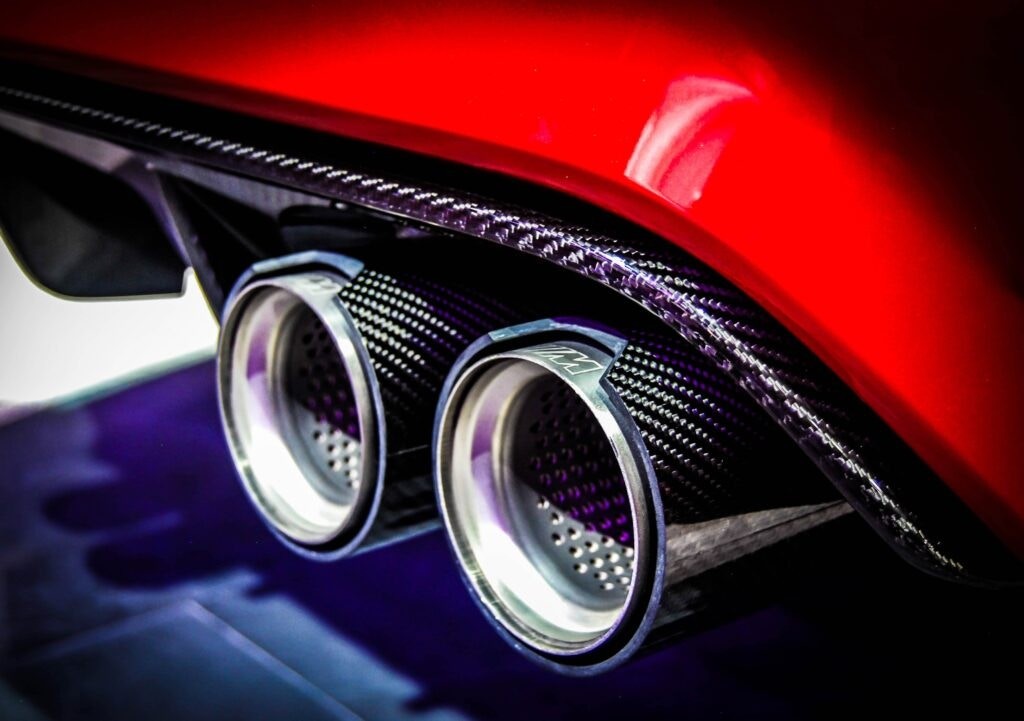Car repairs are often an unwelcome surprise, hitting our wallets when we least expect it. Nobody wants to face a hefty bill for fixing their vehicle, but understanding which car parts are the most expensive to replace can empower you to budget proactively for potential maintenance. Knowing this information helps you decide if setting aside funds for car repairs is a wise financial move.
Maintaining your car diligently and to a high standard is not just about keeping it running smoothly today; it’s also about preserving its future value. For many, a car represents a significant asset. Taking good care of it ensures that when you decide to sell or trade it in, you’ll receive the best possible price.
From the essential clutch to the vital alternator, and the often-overlooked water pump, this guide will delve into the costs and key considerations for replacing some of the most common and expensive car parts. We’ll also touch upon whether these replacements are typically covered under warranty, helping you navigate the complexities of car ownership and maintenance.
Understanding the High Costs of Car Parts Replacement
When it comes to car maintenance, being informed is crucial for smart spending. Knowing which repairs are absolutely necessary and should be addressed promptly – even if they strain your budget – is part of responsible car ownership.
While your car is under warranty, most repairs and part replacements are generally covered. However, it’s important to note that “standard wear and tear” is often excluded from warranty coverage. Therefore, it’s always best to address any suspected issues quickly. Early detection can not only prevent more significant damage but also help establish that the problem wasn’t caused by your normal driving habits, potentially aiding in warranty claims if applicable.
Engine Components: The Heart of the Matter
A car alternator is a vital part, and addressing alternator issues promptly is crucial for preventing more extensive and costly problems with your vehicle’s electrical system.
Alternator
The alternator is a critical component within your car’s charging system. Its primary function is to convert mechanical energy from the engine into electrical energy. This electrical power is essential for recharging the car battery and powering the vehicle’s electrical systems while the engine is running. Several factors contribute to the alternator’s replacement cost. Its intricate design, the use of high-quality materials in its construction, the labor involved in replacing it, and vehicle-specific designs all play a role in the overall expense. Despite the cost, the alternator is indispensable for ensuring the smooth and reliable operation of your vehicle’s electrical functions.
Engine Control Unit (ECU)
The Engine Control Unit, or ECU, is essentially the brain of your car’s engine management system. This sophisticated computer is responsible for managing a wide array of engine functions, from regulating the air-fuel mixture for optimal combustion to controlling ignition timing and managing emissions output to meet environmental standards. The cost of an ECU replacement is significant due to its advanced technology and the necessity for vehicle-specific programming. The high-quality materials used in its construction and the intricate electronics within contribute to its expense. However, its crucial role in optimizing engine performance, efficiency, and emissions makes it a vital component, justifying the cost when replacement becomes necessary.
Radiator
The radiator is a cornerstone of your car’s cooling system. Its job is to dissipate the significant heat generated by the engine. It achieves this by circulating coolant through a network of tubes and fins, effectively reducing the engine’s temperature. The radiator’s critical importance in preventing engine overheating and potential severe engine damage makes it a relatively expensive part to replace. The use of quality, heat-resistant materials, the complexity of its design to maximize cooling efficiency within limited space, and the durability required to withstand engine bay conditions all contribute to its cost. Neglecting radiator maintenance and allowing it to fail can lead to catastrophic engine issues, potentially even categorizing your car as a write-off due to the extent of the damage.
Head Gasket
The head gasket is a vital sealing component located between the engine’s cylinder head and the engine block. Its primary function is to create a tight seal, preventing coolant and oil from leaking out, and importantly, preventing them from mixing with each other and entering the combustion chambers. Replacing the head gasket can be a relatively expensive repair due to the labor-intensive process involved. Accessing the head gasket typically requires significant engine disassembly. The gasket itself must also be made of robust materials to withstand high temperatures and pressures within the engine. Its critical role in maintaining engine compression and preventing fluid leaks underscores its importance, making replacement, when necessary, a non-negotiable repair.
Dual Mass Flywheel
The dual mass flywheel is a specialized component in the car’s transmission system, primarily found in vehicles with manual transmissions. It’s engineered to dampen vibrations originating from the engine and drivetrain, leading to smoother gear changes and a more refined driving experience. Replacing a dual mass flywheel can be an expensive undertaking, largely due to the significant labor involved. The transmission often needs to be removed to access and replace the flywheel. A worn or damaged dual mass flywheel can manifest in various drivability issues and potentially cause damage to the gearbox itself over time. Addressing a failing dual mass flywheel is therefore essential to maintain smooth vehicle operation and prevent further, potentially more costly, damage.
Turbocharger
A turbocharger is an engine component designed to significantly boost engine power and efficiency. It works by compressing the air entering the engine’s cylinders, allowing for more fuel to be burned and thus generating more power. Turbocharger replacement costs can be substantial for several reasons. They are manufactured with precision engineering to operate at extremely high speeds and temperatures. This necessitates the use of specialized, high-temperature resistant materials. Furthermore, installation can be labor-intensive, adding to the overall expense. Despite the cost, a functioning turbocharger is crucial for maintaining the intended performance and fuel efficiency of turbocharged vehicles.
Timing Belt
The timing belt is a critical engine component responsible for synchronizing the rotation of the engine’s camshaft and crankshaft. This precise synchronization is essential for ensuring the engine valves open and close at exactly the right moments in relation to the pistons. Replacing the timing belt can be relatively costly primarily due to the labor involved. The process often requires significant engine disassembly to access and replace the belt properly. Moreover, timing belts are made from high-strength, durable materials to withstand constant tension and engine heat, contributing to their price. Failure to replace a timing belt at recommended intervals can lead to catastrophic engine damage, making timely replacement a crucial maintenance task.
Hybrid or Electric Battery
The hybrid or electric battery is the powerhouse of electric and hybrid vehicles, providing the energy to drive the electric motor and enabling zero-emission or reduced-emission driving. Replacing a hybrid or electric vehicle battery can be one of the most expensive car repairs you might encounter. This high cost is attributed to the advanced technology inherent in these batteries, the use of high-capacity lithium-ion cells, and the complex battery management and control systems they incorporate. While the replacement cost is significant, the battery is the core component that determines the vehicle’s driving range, performance, and overall viability as an electric or hybrid vehicle. Therefore, maintaining battery health and replacing it when necessary is essential for the continued operation and value of these vehicles.
Critical Mechanical and Safety Parts: Ensuring Vehicle Integrity
Maintaining or promptly replacing airbags is crucial for vehicle safety. Addressing any suspected airbag issues is paramount for passenger protection.
Clutch
The clutch is a fundamental component in vehicles equipped with manual transmissions. It serves as the crucial link between the engine and the transmission, allowing the driver to engage or disengage power to the wheels. This engagement and disengagement are necessary for gear changes and stopping the vehicle while the engine is running. The cost of clutch replacement is influenced by several factors. The manual transmission system itself is complex, requiring precise component interaction. The installation process is labor-intensive, often involving significant disassembly. And finally, the clutch components must be made of high-quality, wear-resistant materials to withstand constant friction and pressure. Clutches are subject to wear and tear over time, and eventual replacement is a normal part of manual car maintenance, albeit one that can be relatively expensive.
Automatic Gearbox
An automatic transmission dramatically simplifies driving by automatically shifting gears without any manual input from the driver. This complex system utilizes hydraulics, electronics, and intricate mechanical components to select the optimal gear for any given driving situation. Replacing an automatic gearbox is often a substantial financial undertaking. The high cost is due to the sophisticated engineering and manufacturing precision required for these transmissions, the complex network of hydraulics and electronic controls within, and the sheer number of parts involved. Automatic transmission replacement is a major repair, reflecting the complexity and critical function of this system in modern vehicles.
Exhaust System
The exhaust system is more than just a pipe for fumes; it plays a multifaceted role in vehicle performance and emissions control. It safely channels exhaust gases away from the engine and passenger cabin, reduces harmful emissions through catalytic converters, and minimizes engine noise with mufflers. Replacement costs for exhaust systems can vary widely. Factors influencing the price include the complexity of the system – some vehicles have multiple catalytic converters and resonators – the materials used in construction, and the level of customization, as performance exhaust systems can be significantly more expensive. Maintaining a properly functioning exhaust system is not only essential for optimal engine performance and fuel efficiency but also for ensuring compliance with increasingly stringent emissions standards.
Starter Motor
The starter motor is a vital component within a car’s ignition system. Its sole purpose is to crank the engine, initiating the combustion process and starting the vehicle. When you turn the ignition key, you’re activating the starter motor. Starter motor replacement can be a significant expense for several reasons. These motors contain intricate electrical components designed to deliver a powerful burst of energy. Installation can be labor-intensive, often requiring access in tight engine compartments. And to ensure reliability, quality materials are essential in their construction. A malfunctioning starter motor will render your car immobile, highlighting the necessity and justifying the expense of its replacement to get you back on the road.
Airbags
Airbags are paramount safety features in modern cars, engineered to protect vehicle occupants in the event of a collision. They are designed to deploy rapidly in a crash, providing a cushioning barrier between the occupant and the vehicle’s interior, significantly reducing the risk of serious injury. You cannot pass your mandatory vehicle safety inspection, often called an MOT, without functional airbags. Replacing airbags can be an expensive repair due to the sophisticated technology involved. They rely on specialized sensors to detect impacts, complex electronics to trigger deployment, and precisely engineered inflation mechanisms. Malfunctioning airbags represent a serious safety risk, as they may fail to deploy in an accident, leaving occupants unprotected. Therefore, airbag replacement is not just a repair; it’s a critical safety measure.
Steering Rack
The steering rack is a fundamental part of a car’s steering system. It’s the component that translates the driver’s steering wheel inputs into the physical movement of the vehicle’s wheels, allowing you to steer the car. Steering rack replacement can be relatively expensive due to several factors. It’s a precision-engineered component requiring tight tolerances for smooth and accurate steering. It’s constructed from quality materials to withstand constant stress and road vibrations. And installation often necessitates careful alignment procedures. A properly functioning steering rack is essential for safe vehicle control, making its replacement, when needed, a crucial repair.
Comfort and Functionality Parts: Enhancing the Driving Experience
Consider alternatives before replacing a built-in sat nav, as repair or replacement can be costly. Solutions like phone mounts or portable GPS devices might be more economical.
Built-in Sat Nav
Built-in satellite navigation systems provide integrated GPS navigation directly within the car’s dashboard. While convenient, repairing or replacing these systems can be surprisingly costly. The high expense stems from the model-specific technology integrated into each car. These systems are often deeply intertwined with the vehicle’s electronics and control systems, making replacement a complex and potentially expensive undertaking. Consider whether repair or replacement is the most economical solution, especially when compared to readily available and often more up-to-date smartphone navigation apps or portable GPS devices.
Air Conditioning
Air conditioning is no longer a luxury but an integral element of car comfort, particularly in warmer climates. The air conditioning system cools and dehumidifies the air inside the car cabin, creating a more pleasant driving environment. The cost associated with air conditioning system repairs is influenced by its complex nature. The system comprises numerous intricate components, including the compressor, condenser, evaporator, and refrigerant lines. Repairs can range from relatively minor fixes like refrigerant leaks to major component replacements such as the compressor, which can be a significant expense. Maintaining your car’s air conditioning system is important for comfort, but be prepared for potentially costly repairs should issues arise.
Cost Breakdown: Replacing Car Parts Out of Warranty
Once your car’s warranty expires, you become responsible for all repair costs. Here’s a table summarizing the average cost ranges for replacing some of the Most Expensive Car Parts, including both the part cost and the labor charges.
Regular checks and maintenance of your exhaust system are important for your vehicle’s efficiency and to ensure you pass vehicle inspections. Investing in timely exhaust repairs is a smart way to manage long-term running costs.
| Car part | Average cost range (£) | Labour cost (£) |
|---|---|---|
| Alternator | £350 – £800 | £100 – £450 |
| ECU | £300 – £800 | £100 – £300 |
| Radiator | £100 – £300 | £100 – £200 |
| Water pump | £100 – £250 | £100 – £200 |
| Head gasket | £300 – £800 | £300 – £500 |
| Dual mass flywheel | £200 – £500 | £200 – £400 |
| Turbocharger | £400 – £1,500 | £200 – £400 |
| Timing belt | £200 – £500 | £150 – £300 |
| Hybrid or electric battery | £1,000 – £5,000 | £300 – £800 |
| Clutch | £300 – £800 | £300 – £500 |
| Automatic gearbox | £1,000 – £3,000 | £300 – £600 |
| Exhaust system | £100 – £500 | £100 – £200 |
| Starter motor | £100 – £300 | £100 – £200 |
| Airbags | £200 – £1,000 | £100 – £200 |
| Steering rack | £400 – £1,000 | £200 – £400 |
| Built-in sat nav | £100 – £500 | £100 – £200 |
| Air conditioning | £300 – £800 | £150 – £300 |




Note: These costs are average estimates and can vary based on vehicle make, model, engine type, location, and garage labor rates. It is always advisable to get a specific quote from a reputable mechanic for your particular vehicle.
Frequently Asked Questions (FAQs)
Which car brand typically has the most expensive parts?
Luxury car brands like Rolls-Royce, Bentley, and Bugatti are renowned for having the most expensive car parts. This is largely due to their exclusive designs, limited production volumes, and the use of premium materials. If you are considering purchasing a luxury vehicle, it’s prudent to carefully review the terms and duration of their warranties to mitigate the risk of unexpected and substantial maintenance expenses.
What is generally considered the most expensive part within a car engine?
Within a car engine, the crankshaft is often cited as the most expensive individual part. Its high cost is attributed to the precision engineering and high-quality materials required for its manufacture. The crankshaft must withstand immense forces and continuous rotation, demanding exceptional durability and manufacturing accuracy.
Are Original Equipment Manufacturer (OEM) parts generally more expensive than aftermarket parts?
Yes, OEM parts are typically more expensive than aftermarket parts. OEM parts are produced by the vehicle manufacturer or their designated suppliers and are designed to meet the car’s original specifications and quality standards. Aftermarket parts are produced by third-party manufacturers and can vary in quality and price, often being less expensive than their OEM counterparts. While aftermarket parts can offer cost savings, OEM parts are often preferred for guaranteed fit and performance, particularly for critical components.
Which car brands are generally the most expensive to maintain overall?
Luxury and high-performance car brands such as BMW, Mercedes-Benz, and Porsche generally top the list of most expensive brands to maintain. This higher maintenance cost is a combination of factors, including the price of specialized parts, the complexity of their advanced vehicle systems, and higher labor rates typically charged at franchised dealerships that specialize in these brands. Owning a luxury vehicle often comes with a higher long-term cost of ownership due to these elevated maintenance expenses.
Making Informed Decisions About Your Car
Understanding the potential costs associated with replacing expensive car parts is crucial for making informed decisions about car ownership. It’s not just about the initial purchase price; the long-term maintenance and repair costs play a significant role in the overall financial implications of owning a vehicle.
Monitoring your car’s value and being aware of potential depreciation is also important. While all cars depreciate over time, the condition and maintenance history of your vehicle significantly influence its resale value. Keeping your car in good repair, addressing issues promptly, and using quality parts can help preserve its value.
Tools like the Motorway’s Car Value Tracker can be invaluable in this process. By providing free monthly valuation updates for your vehicles, you can track depreciation, understand the best time to sell, and assess whether investing in certain repairs is financially sound in relation to your car’s current market value. Being proactive about car maintenance and staying informed about its value empowers you to make smart choices and optimize your car ownership experience.
Ready to Sell Your Car?
Are you considering selling your current vehicle or exploring your options in the car market? For further insights into car ownership, maintenance tips, and guidance on selling your car, explore our extensive collection of guides here. We cover a wide range of topics, from navigating Clean Air Zones and understanding car tax to changes in license plates and the intricacies of part exchange, providing you with the knowledge you need to be a well-informed car owner.